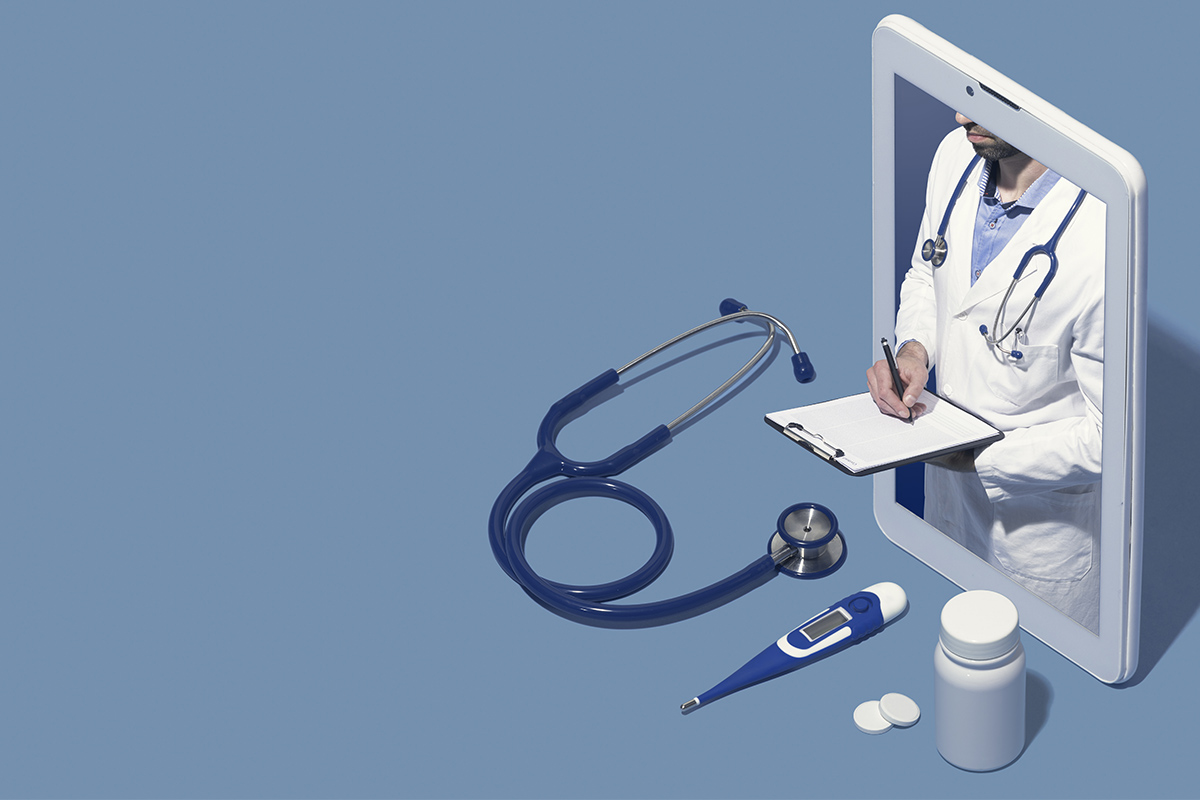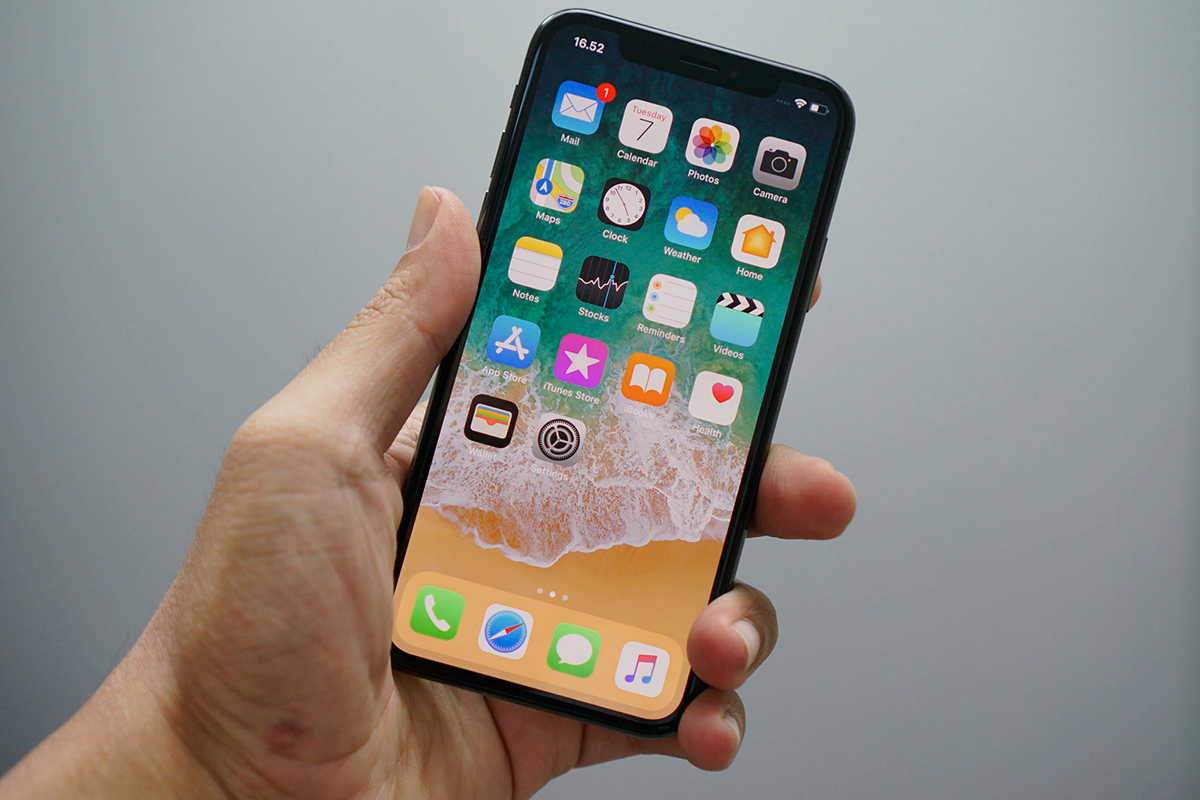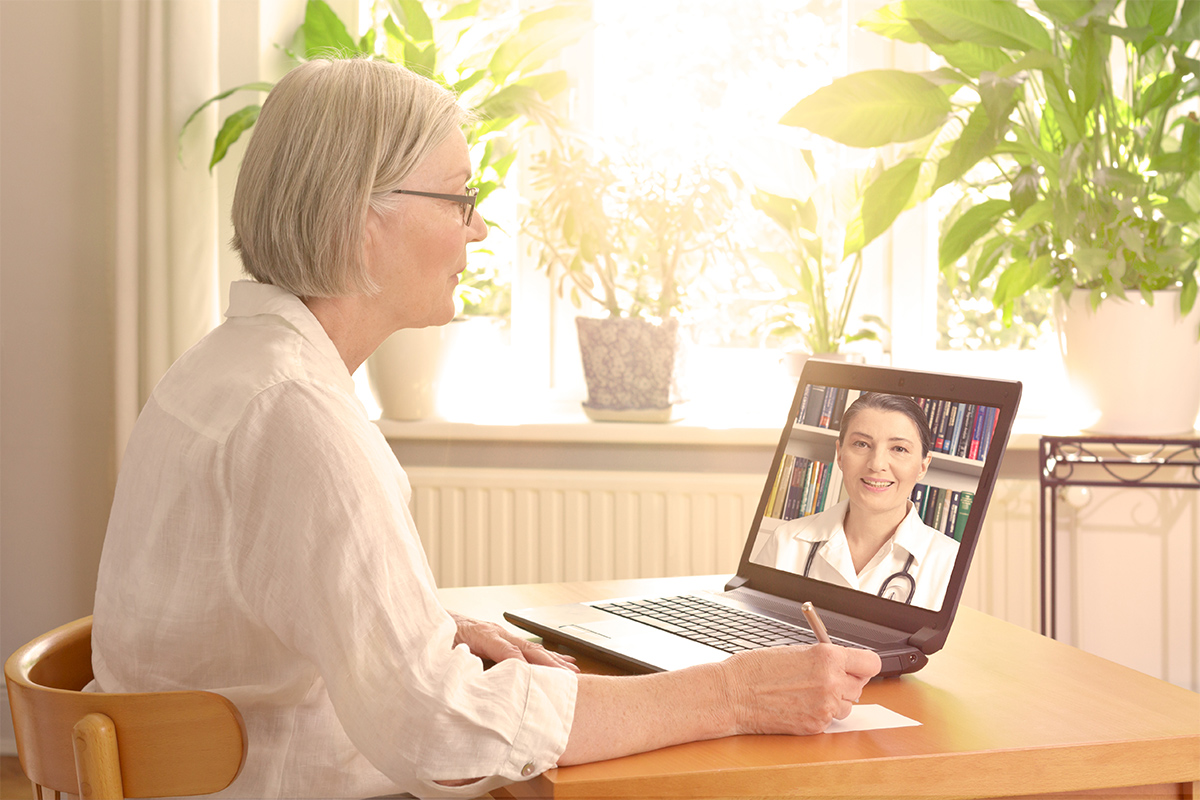Nothing new. Call the patient anytime and document/bill the call (see info in other sections of this article). If the entire clinic is being changed over to phone visits, ask the administration to notify patients in advance that their visit can be conducted by phone instead of in the clinic. Remember to use *67 or the Doximity Dialer to mask your private number if you want. Phone visits can be used for any established patient, regardless of location and any new patient within your state (for now).
Feature | Telehealth: Rapid Implementation For Your Cardiology Clinic (Updated March 24, 2020)

With the outbreak of novel coronavirus 2019 (COVID-19), many outpatient clinics and facilities find themselves not ready yet for regular telehealth visits. The health care establishment is scrambling to establish screening protocols, cancel elective medical care, and prepare for urgent and critically ill individuals. Clinical acumen will guide who is high-risk and needs to avoid exposure, and which at-risk patients need evaluation.
News Flash: Major changes have been made in requirements for telehealth (virtual) visits which make it easier to provide excellent care remotely.
The most current advice from the Centers for Medicare and Medicaid Services (CMS) is available here.
Phone calls and patient portal messaging will increase dramatically. Remote monitoring of implanted devices will support the chronic disease population, while distributing noninvasive monitoring using weight scales, blood pressure cuffs and other more standard cardiac monitoring will need to be established to help replace routine nursing visits.
After decades of almost imperceptible progress in telecardiology, virtual visits, previously an adjunct to in-person care, now will have to replace outpatient cardiac clinic visits for an undetermined period of time to promote social distancing.
Not to worry, because with a few turnkey solutions as outlined here, your clinic can be set up for virtual visits in very short order. We hope to offer actionable information to assist ACC members with the adoption and incorporation of telehealth and digital health into varied practice environments to support safe access to care during this challenging time.
IMPORTANT NOTE: Virtual video visits as described here are oriented towards established patients.
LIABILITY ALERT:
Be sure your malpractice insurer allows for remote visits in these capacities. To date, there have been very few malpractice cases in telehealth (most in teleradiology). There is no clear guidance regarding care provision during a pandemic.
LOCALE ALERT:
For many, practicing on the edge of a state line means licensing in multiple states. During a telehealth encounter, the service is considered to take place at the physical location of the patient (as opposed to the provider). This requires providers to comply with the laws and regulations associated with the appropriate professional licensing board in the patient's state. In the setting of a pandemic, your legal department may offer alternative guidance.
DOCUMENTATION:
Documentation requirements for a telehealth service are the same as for a face-to-face encounter. The information of the visit, the history, review of systems, consultative notes or any information used to make a medical decision about the patient should be documented. Documentation should include a statement that the service was provided through telehealth.
- From March 6, Medicare will pay for office, hospital and other visits furnished via telehealth across the country, including in a patient's place of residence or skilled nursing facility.
- Telehealth visits for services in the Medicare telehealth program will be reimbursed at in-office rates during the current state of emergency.
- A range of providers, including physicians, nurse practitioners, clinical psychologists and licensed clinical social workers, will be able to offer telehealth to their patients. For a fact sheet from CMS, click here.
- Additionally, the U.S. Department of Health and Human Services' Office of Inspector General (OIG) is providing flexibility for health care providers to reduce or waive cost-sharing for telehealth visits paid by federal health care programs.
- Several states including Massachusetts, Illinois and Texas have mandated that commercial insurance allow and reimburse televisits at the same rate as in-office visits. Note, this is a rapidly evolving situation, so check for updates frequently, including the CMS website.
- Please consider speaking with your ACC Chapter Governor to coordinate efforts to get your state on board.
Appropriate Patients!
Follow your local, state or hospital guidelines to ensure identifying appropriate patients. Remember, who you see or talk with remotely is in your control. If someone is too ill, breathless while speaking or unstable, direct them to a face-to-face or urgent/emergent visit. If you are finding it difficult to assess a patient without being physically present, direct them to an in-office face-to-face visit.
The Plain Old Telephone

Many of us call our patients regularly and a visit this way is no different. Your existing scheduling system can be used to list virtual or phone visits.
We strongly recommend creating an encounter and documenting the visit. Use standard templates or a narrative note and bill by time. Again, document as you would during an in-person visit.
You also have the ability to e-prescribe and place orders, although diagnostics will require an in-person visit.
Education and counseling can be provided through these visits.
Masking your phone may be necessary to block your personal phone number.
Here are the steps:
- Dial *67 prior to placing the call, or use a dialer to help.
- Use the FREE Doximity Dialer. Download the Doximity App for your phone (Apple Store or Google Play) and set this up to dial as if you are calling from your institution's main number.
- Use a hospital phone line if you are at your institution.
Telephone Visit Billing
Telephone services without face-to-face discussion is infrequently reimbursed at a significant level. These codes can only be reported for an established patient and are not billable if the call results in the patient coming in for a face-to-face service within the next 24 hours (or next available urgent visit). These calls are also not billable if they refer to an E/M service performed within the last seven days.
| Billing Code* | Description |
| Telephone services 99441 |
5-10 minutes |
| 99442 | 11-20 minutes |
| 99443 | 21-30 minutes |
*Note that these telephone billing codes are not covered by Medicare.
The documentation may aid your institution in capturing the work done during the pandemic. It is important to note that coverage and payment vary across payers, thus coverage of these services is not consistent.
Getting Started: Video Conferencing

Many of us routinely video conference for meetings, administrative events, education, etc. Does this mean you should just Skype or Facetime with your patient? Not exactly. Pick a telehealth provider, ideally one that is HIPAA compliant. Note that CMS has eased restrictions that now allow the use of FaceTime and other platforms. However, it's likely this will need to be a long-term solution, so consider establishing this for the future.
Ask your hospital if there is a fully integrated solution, and for a list of HIPAA-compliant conferencing systems already contracted with your institution. These will be essential for meetings as well as potentially patient care. These vendors represent that they provide HIPAA-compliant video communication products:
- Skype for Business / Microsoft Teams
- Updox
- VSee
- Zoom for Healthcare
- Doxy.me
- Google G Suite Hangouts Meet
Alternatively, your institution may already have telehealth services established in your own or another department. Neurology, psychiatry and behavioral health, pediatrics, and dermatology are robust users of telehealth at many institutions and a good place to look to see if you have a contracted telehealth provider. If there is an existing system, onboarding new providers can be expedited in several ways.
- Instead of waiting for Epic integration, a separate application launch (a few systems with this capability are Amwell, Vidyo, Intouch, among others) may be a lighter lift for your telehealth technology support team.
- If the telehealth program needs to train your staff and providers, send a provider and staff member for a "train the trainer session" and take that workload off the central telehealth group. This will likely significantly shorten your "wait time" for onboarding.
- Some electronic health record (EHR)-based video solutions require patients to be active on the patient portal. Start actively and routinely enrolling patients now on your portal platform as it also will be useful in the setting of social distancing and decreasing phone call volume.
- Lastly, consider foregoing patient test calls if you have a robust system that can report these in other ways.
Whether using a makeshift (HIPAA compliant) video tool or a formal telehealth platform, once set up, the interaction is easy.
- A scheduled visit in your EHR will tell you and the patient the time at which to launch your application. Most applications are quite user friendly and open a Video Window in one click.
- Remember to unmute yourself, raise the volume, and allow video connection. Remind your patient of the same.
- Don't be frustrated with connectivity issues, patients are fine with talking on the phone as you look at each other if the volume doesn't work.
Who is the Telehealth Team?
- At a minimum, just you and your patient.
- An effective structure is to have an office assistant or medical assistant call the patient in advance who has consented to the telehealth visit to 1) ensure they have the set-up for the televisit, 2) confirm insurance details for appropriate billing, and 3) review past medical history, meds, allergies and enter any vital signs obtained at home.
What does my patient need?
- For stand-alone video visit options, patients can use a smartphone, tablet, laptop or desktop computer.
- An email from you with a link to click, which will open in a browser and be able to see and interact with you.
Tips for the actual video visit
- Choosing patients for this technology is less of an issue at this time. If you think you can forego a physical exam, give it a try. You will eventually find your favorite use cases.
- Lead the visit as if the patient is in the room, except with a limited physical exam. The patient can show their scar or push on their skin to demonstrate edema, for example, and your clinical skills will tell you if they look too ill.
- Eventually you can have patients buy (or you can invoke population health to send them) blood pressure cuffs, weight scales, HR and O2sat monitors where either they share their numbers over the patient portal or during the visit, or you adopt a system which uploads to your EHR.
- For now, take a history, answer questions, review medications, provide guidance and reassurance, and even share your screen to review imaging or offer education.
As with an in-person or phone visit, you can have your EHR up and running to document the visit and you can e-prescribe (avoid controlled substance prescription over televisits without speaking with your legal team), and place orders. Diagnostics will need to be in person.
Additional Telehealth Virtual Video Visit Billing
The College recently posted an article, "Coding Updates For COVID-19" which details Medicare codes for services that may also be helpful to care for patients remotely and coordinate care with other clinicians through interprofessional consultations. These include G2012, G2010, 99421, 99422, 99423, 99451, 99452, 99457, 99458, G2061, G2062, and G2063.
Of note, CPT codes: 99201-99215: 0 indicates a new patient and 1 indicates an existing patient. We recommend limiting televisits to established patients. (E/M visit codes should not yet be used for telehealth services with traditional FFS Medicare patients pending additional instructions from CMS.) We recommend limiting televisits to established patients.
The documentation for these encounters mirrors in-person requirements (except the exam). Let's use 99213 as an example.
This code requires either:
- Expanded problem-focused history and low complexity medical decision-making, or
- 15 minutes spent face-to-face with the patient if coding based on time.
Then, a telehealth modifier will be needed. The specific one may vary based on the service provider:
GT MODIFIER: Used to indicate a service rendered via synchronous telehealth.
MODIFIER 95: Used when billing to some private payers.
PLACE OF SERVICE 02: Defined as "the location where health services and health-related services are provided or received, through a telecommunication system." It will also be helpful to check with third-party payers for their preference.
More details are provided by CMS in this table.
What about Medicaid? In many places, rapid changes are mirroring those for Medicare beneficiaries. Check your local health department website or state government website. Read about an example of the overwhelmingly positive changes in Colorado.
Regarding private commercial insurers, check with them directly for details about coverage in your region.
Look for additional information to come about wearables/remote monitoring/sensors, detailed reimbursement, legal pearls, pitfalls when scaling, and more.
Documentation Template
To ease documentation and satisfy some of these points, here's an example to use and modify as needed:
I am seeing this patient today virtually using HIPAA-compliant videoconferencing technology. The patient has previously provided full consent to use this technology and understands the risks and benefits of proceeding. I am seeing the patient today from my office in CITY, STATE, and from their home located within STATE.
FAQs For Clinicians Using EHR-Integrated Video Visits
These FAQs are for clinicians who are extending integrated video visits using the EHR from their institution to their cardiology division. These are the institutions who will establish the long-term systems necessary for telehealth.
Please remember to promote social distancing in outpatient cardiology, and to look ahead at your schedule and decide who is best for a phone call, video visit or who can be rescheduled.
It depends. You can choose to do phone visits only. Video is an option if you would like to "see" your patients. If you have some down time now and want this for long-term use it's a great time to learn and practice. At this time, Medicare and some payers require video to bill E/M codes 99201-99215.
From home, a laptop or desktop with a camera is recommended.
A smartphone, tablet, laptop or desktop with a camera. Your patient needs to be active on the patient gateway for the Integrated Epic Virtual Video Visits.
Document a note (without or with a limited exam) as you usually do. Remember you only need 2/3 elements to bill (detailed history and complex decision-making without a full exam will suffice). You can include a time spent phrase (i.e., OV 15 min >50% face to face) if you're not sure what elements you covered. Bill your usual level and add the GT modifier. (See the coding tip sheet elsewhere in this article for integrated video visit set-up and billing.)
- Sign up for and activate your Patient Gateway account (schedule yourself as your own patient for a dry run).
- Email your telehealth champion (We recommended all practices designate one individual to be the telehealthexpert. We can help them via ACC, but things are moving so fast a dedicated person is needed.)
Clinical Topics: COVID-19 Hub
Keywords: ACC Publications, Cardiology Magazine, ACC Advocacy, Cardiology Magazine, ACC Publications, Coronavirus, Coronavirus Infections, COVID-19, Electronic Health Records, Medicare, Cicatrix, Critical Illness, Blood Pressure, Outpatients, Telemedicine, Ambulatory Care Facilities, Chronic Disease, Malpractice, Ambulatory Care
< Back to Listings




